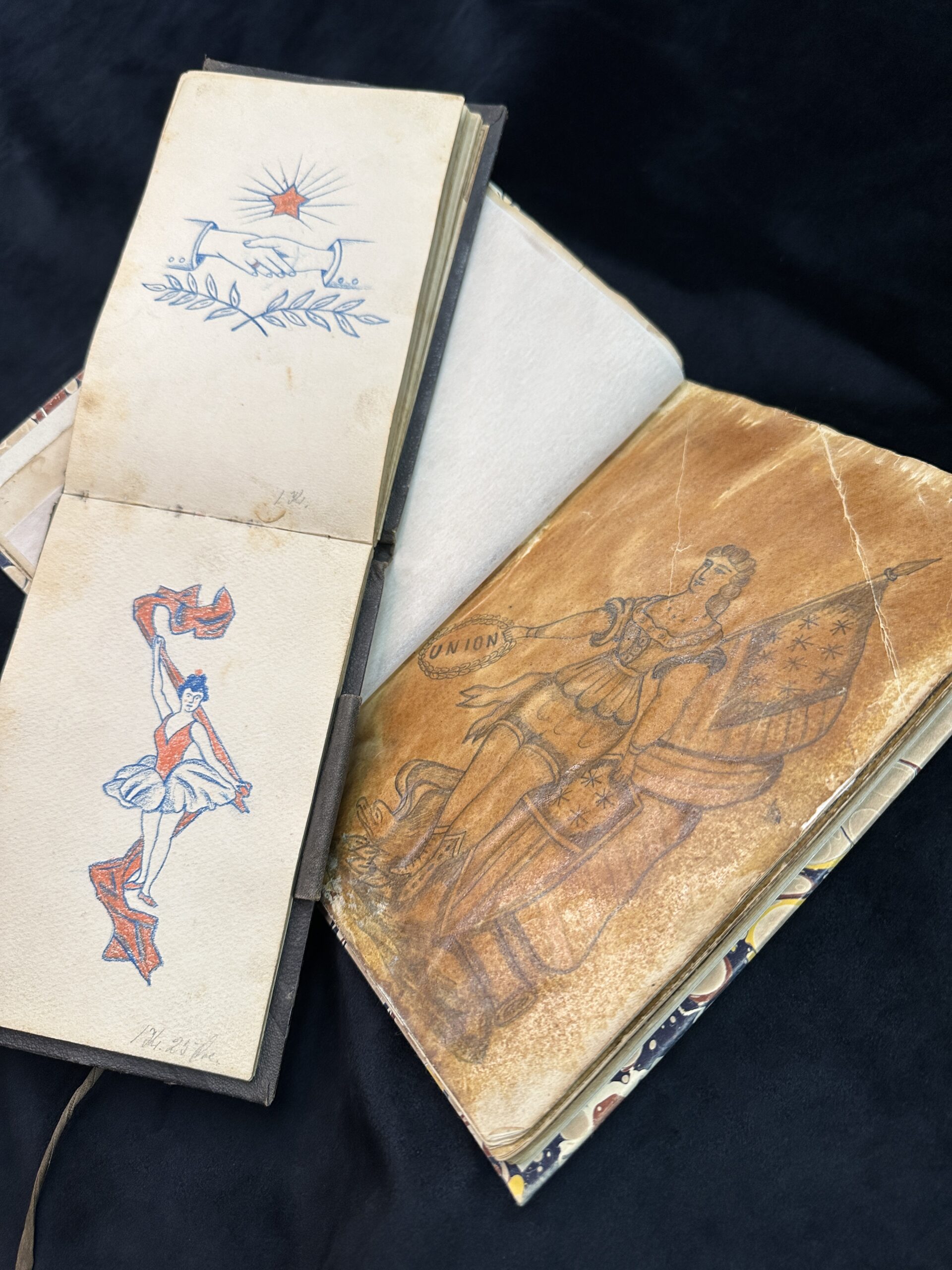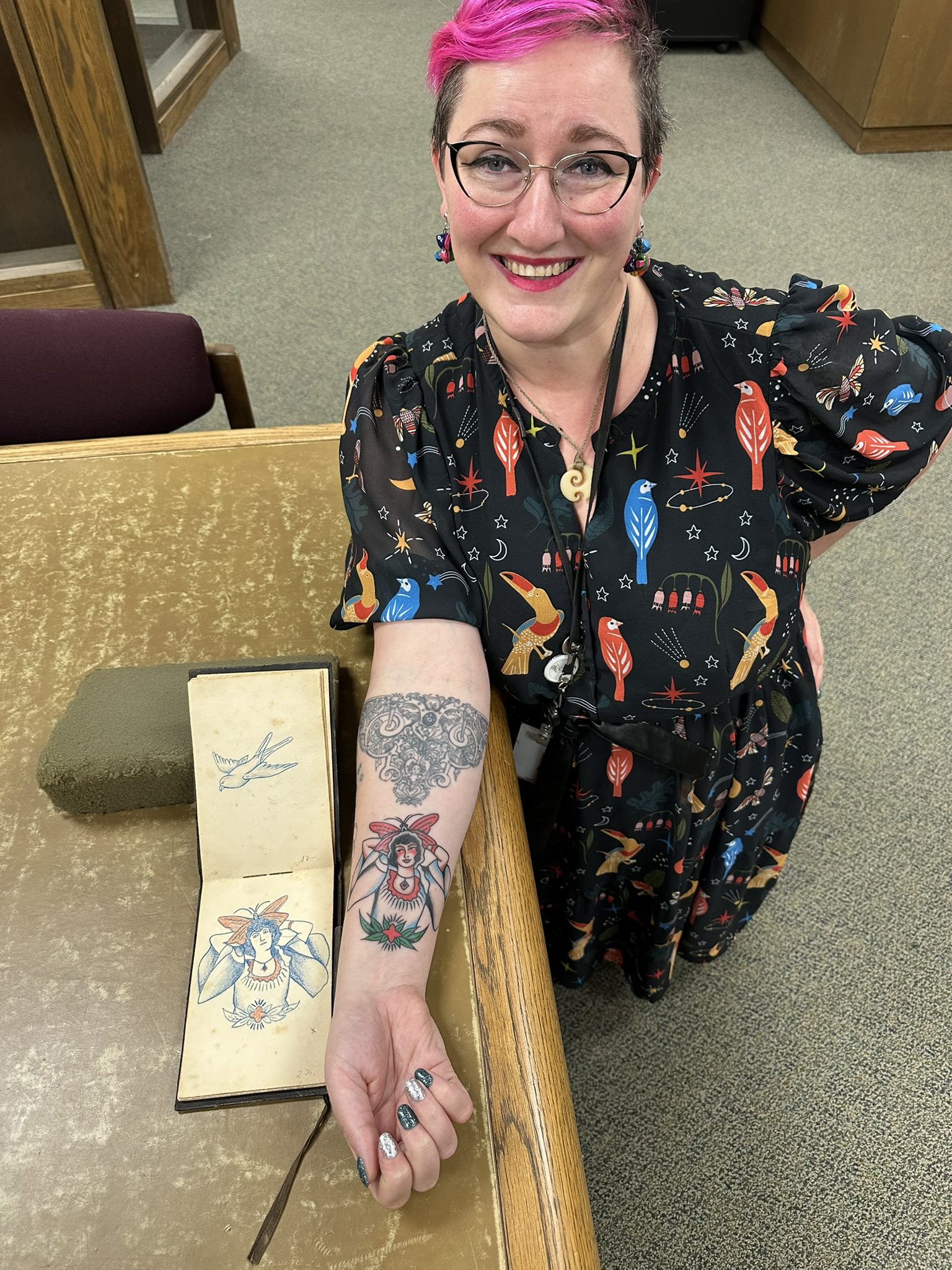By Allie Avis
The Winterthur Library is a global center for the study of decorative arts. But what about the art of decorating … yourself? Among the more than 1 million books and manuscripts that pack the Winterthur Library’s shelves, unassuming gray acid-free boxes guard the once-taboo contents of two very special sketchbooks—original designs for tattoos. But these pieces of art, purpose-made to be permanently inked on the skin of sailors and adventurous individuals, are far from the only tattoo-worthy designs in our collection. The library is a veritable treasure trove of ink inspiration.

Let’s begin with the tattoo pattern books. Both dating from the 19th century, these objects are truly remarkable survivals. Also called flash books—a term borrowed from the eye-catching advertisements produced to promote traveling circuses—they were created by artists as a catalogue of sorts, a repository of ready-to-tattoo designs (as opposed to custom designs). Modern tattoo artists still produce flash designs, or flash for short, which can often be seen decorating the walls of their shops. All you need to do is walk in and point to what you want.
The older of the two books lacks both artistic attribution and a definite date, although scholars have speculated it may have been created as early as the 1850s. It does, however, record the artist’s recipe for tattoo ink. Its designs will be immediately familiar to tattoo aficionados as belonging to the American traditional (or old school) style—think Sailor Jerry—that is marked by strong black outlines, a relatively limited color palette, and little shading. This artist’s primary clientele was likely sailors, and it’s possible he even plied his trade aboard a ship at some point. The mixture of strong patriotic motifs was particularly appealing to those in the Navy, and religious and sentimental designs speak to the emotional priorities of the sailors, who would be away from home in potentially dangerous conditions for long periods of time.
The newer book is dated 1897 and is attributed to W. Christiansen, a Danish immigrant. Christiansen’s designs share some stylistic and subject overlap with those in the anonymous pattern book, with the addition of some Danish national devices. A notable difference is that Christiansen helpfully included the prices for his flash. A more visual difference is Christiansen’s apparent predilection for subjects from the theater and circus; a lovely trapeze artist, a clown, a dancer identified as Dagmar Hansen, and other beauties fall between anchors, flags, and various trade tools.

While a design from Christiansen’s flash has made it onto the forearm of your humble author, these two pattern books are only the tip of the iceberg of possibilities for library-inspired tattoos. From grammars of ornament to books of calligraphy to botanical illustrations, if you’ve got a theme in mind, the library has something for you! In fact, we have so many possibilities for bibliographic tattoos that we’re holding an open house on Saturday, April 12, from 10:00 am–12:00 pm to show off dozens of design highlights from our special collections. This event is open to all, including tattoo artists, people looking for new ink, and folks who simply want to spend the morning looking at beautiful books. No reservations are needed, but if you have any questions about this event or about the library’s tattooable design sources, please reach out to Allie Alvis, curator of special collections, at aalvis@winterthur.org.